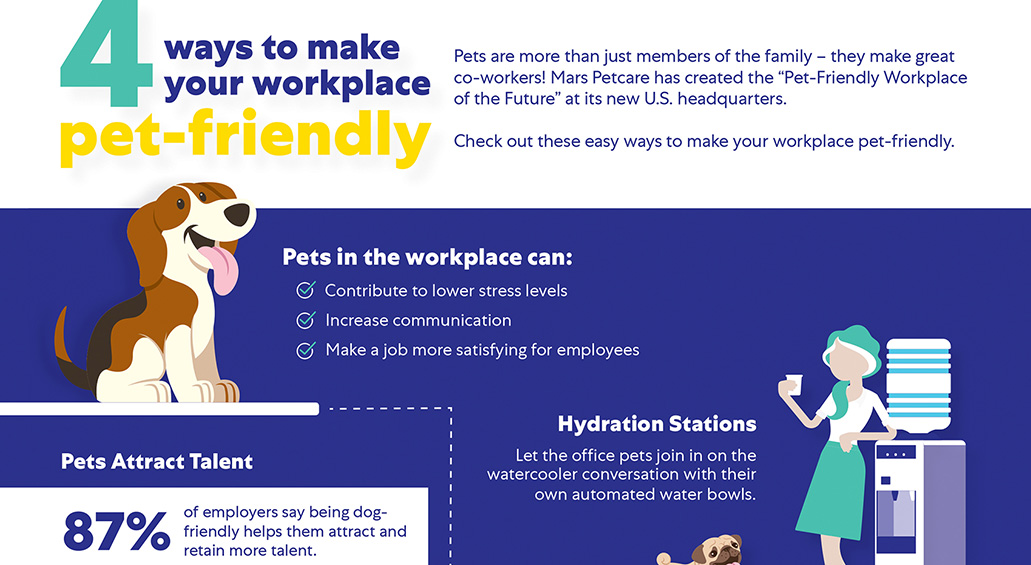If you welcome pets at your business, you’ll want to make sure you try to provide a safe environment for them. Keep these considerations in mind.
Décor and furniture
- Be sure all plants at your business are safe for pets. Check this ASPCA list of toxic and non-toxic plants to make pet-friendly choices.
- Choose pet-friendly fabrics for furnishings. For example, pet fur typically won’t stick to leather or artificial leather. Microfiber also usually can be wiped clean and won’t stain. Patterns, textures and darker colors tend to hide hair and stains better than lighter fabrics.
- Avoid decorations that have small or dangling parts that might look like a toy to pets and could be chewed on or swallowed.
- Keep cords off the ground so they’re out of reach of pets, or use outlet covers and cord protectors.
- Consider flameless candles if candlelight is part of your business’s ambiance. You won’t have to worry about spilled wax or fire if they get knocked over by people or pets.
- Be cautious with fragrance. Essential oils and liquid potpourri can be dangerous for pets. Both ingestion and skin exposure can be toxic. Always keep these items out of pets’ reach.
- If your business plays background music, make sure the volume isn’t too loud and that it doesn’t contain sounds that might upset pets, such as sirens, thunder, animal calls or barks, or other loud noises.
- Evaluate the safety of your space at pet-height. Are there any exposed hazards or sharp edges that might be a danger for them?
Cleaning practices
- Have sanitation supplies and pet-related protocols for staff, such as washing hands after touching pets or pet-related items.
- Choose pet-safe cleaners for your business. Be sure these items are inaccessible to pets.
- Wash pet water bowls frequently to stop the spread of germs. Stainless steel or ceramic bowls are better than plastic, since plastic can get scratches that harbor bacteria. Plastic also can be chewed, with pieces breaking off and becoming a choking or health hazard.
- Consider offering a paw-cleaning station at entrances to help prevent muddy or wet floor surfaces that could contribute to falls.
- Make sure garbage bins are secure and can’t be accessed by curious pets.
Outdoor spaces
- Always mark any areas of your business that have recently been treated with pesticides or fertilizers, since these can be toxic for pets.
- Make sure shade and water are easily accessible in outdoor spaces, particularly in warm weather.
Emergency readiness
- Provide training for staff so they know how to recognize pet behavior and potential pet issues.
- Make sure staff know the location of the nearest pet hospital.
- Consider having leashes and/or pet carriers available in case of emergency need.
- Make pets part of your business’s emergency evacuation plan and staff training.
- Alert first responders about pets in the area during any emergency situation.
- See more emergency considerations here.
Want more tips? Check out the Pets Welcome Toolkit for info about how to launch a pet-friendly business initiative that can benefit businesses, pet parents and pets.





 Your Privacy Choices
Your Privacy Choices